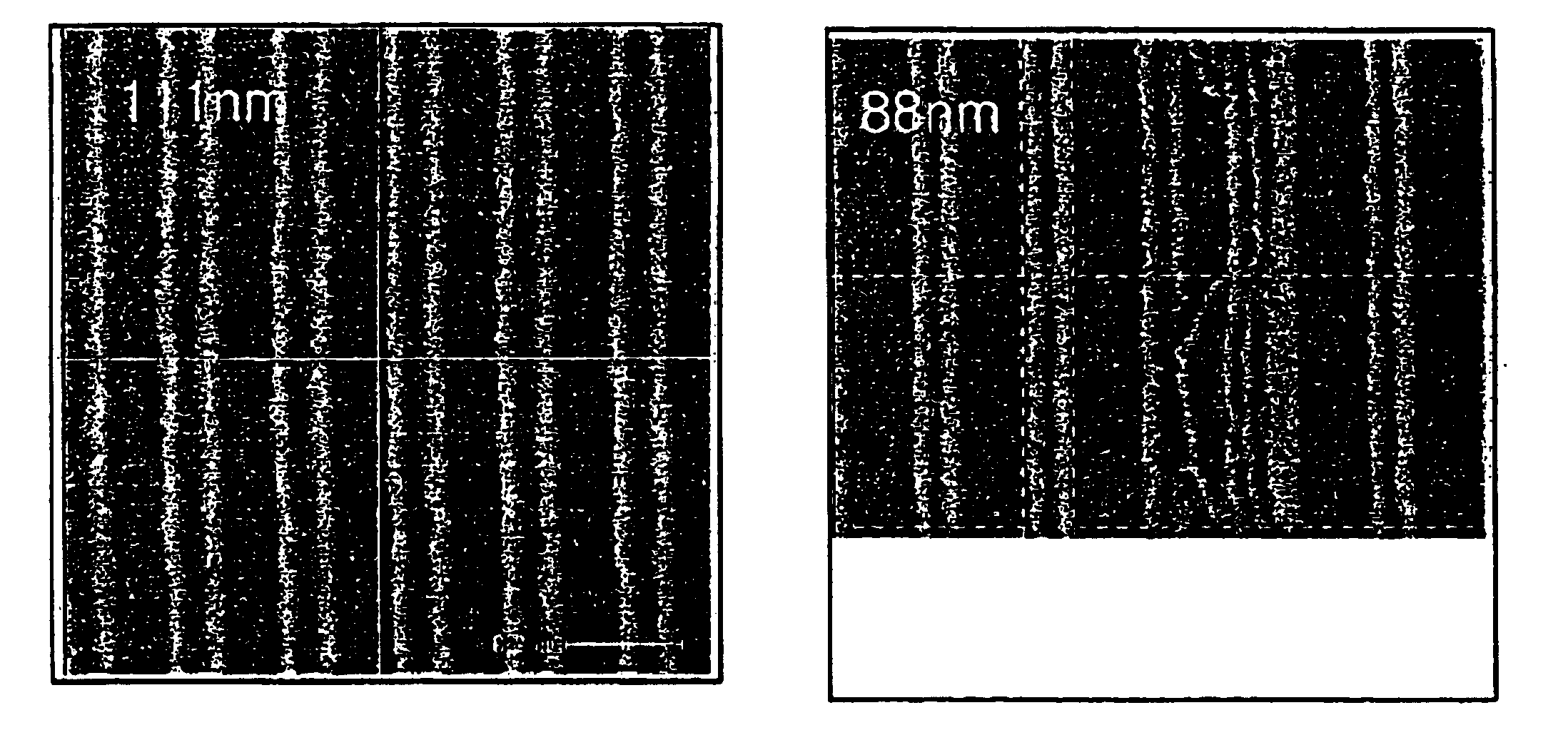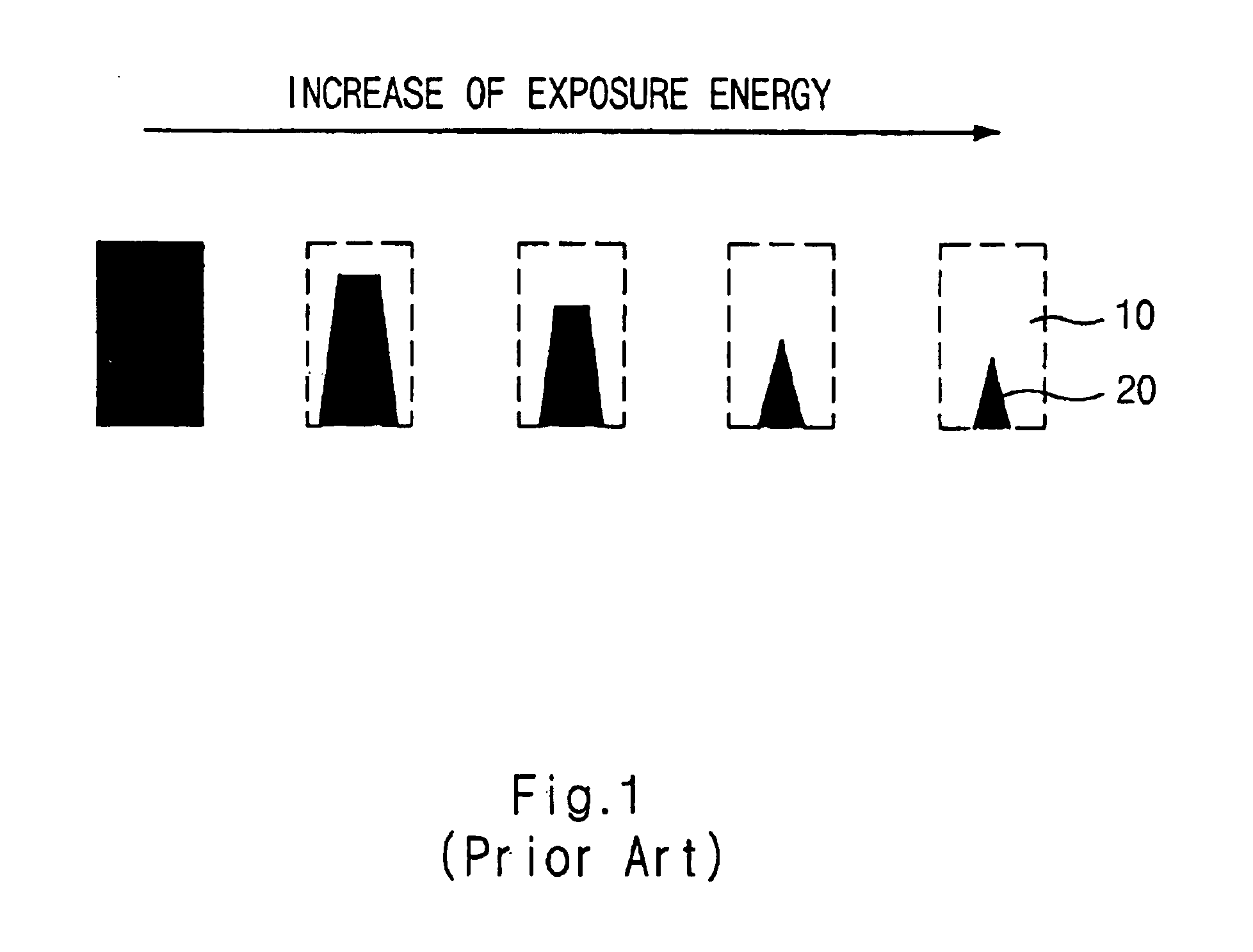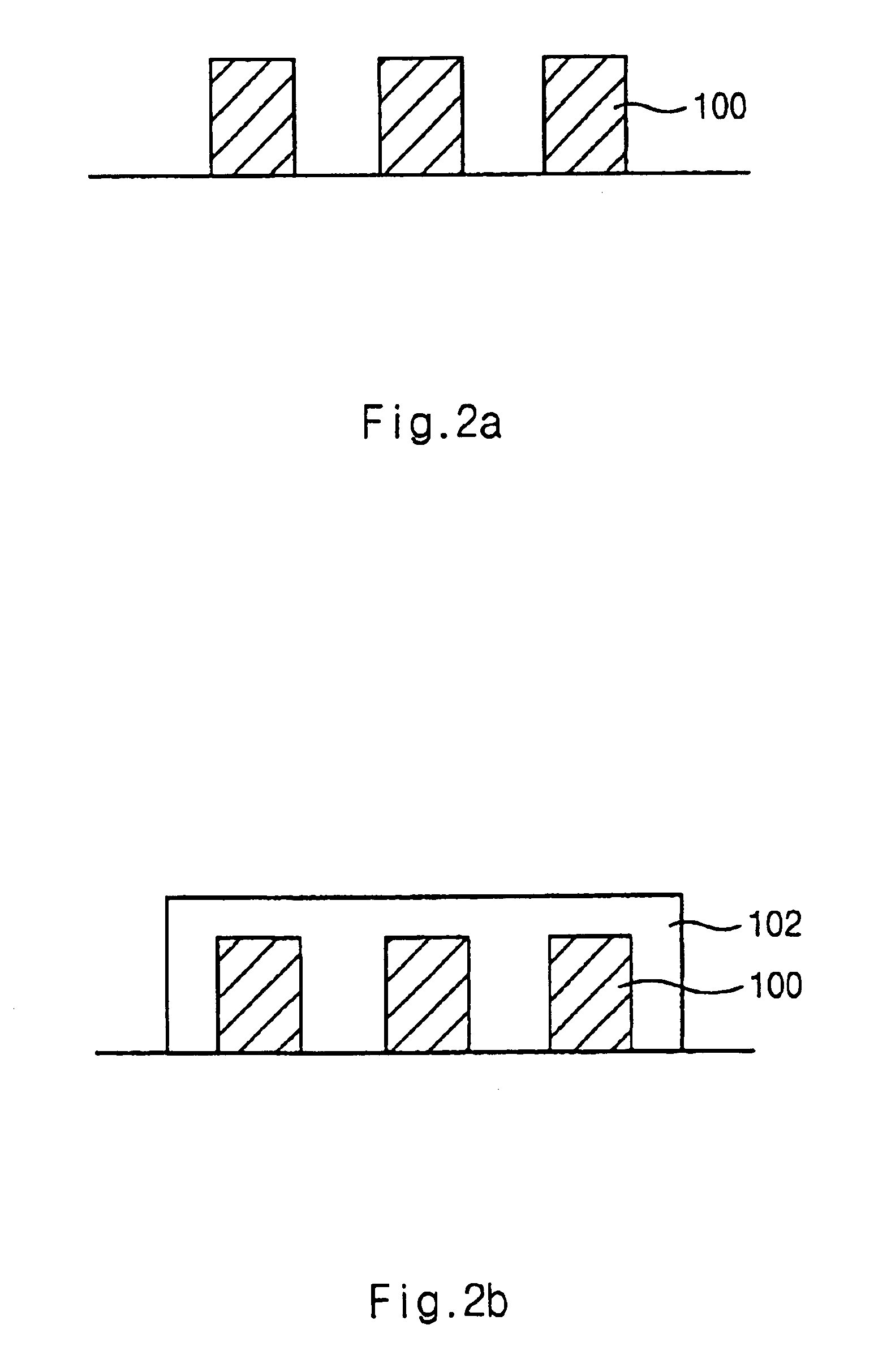Overcoating composition for photoresist and method for forming photoresist pattern using the same
a composition and photoresist technology, applied in the field of overcoating composition and photoresist pattern formation method, can solve the problems of etching pattern transformation and breakage, degradation of process yield, etc., and achieve the effect of reducing the linewidth of photoresist pattern
- Summary
- Abstract
- Description
- Claims
- Application Information
AI Technical Summary
Benefits of technology
Problems solved by technology
Method used
Image
Examples
example 1
Preparation of Overcoating Composition (1)
[0076]Step 1. Synthesis of poly(N,N-dimethylacrylamide)
[0077]To tetrahydrofuran solvent (300 g) were added N,N-dimethylacrylamide (100 g) and AIBN (5 g). The resulting mixture was reacted at 66° C. for 9 hours. Thereafter, the resulting mixture was precipitated in ethylether, and dehydrated, thereby obtaining pure poly(N,N-dimethylacrylamide) (molecular weight ˜12,700, yield ˜88%). The NMR spectrum of the synthesized compound was shown in FIG. 3.
[0078]Step 2. Preferred embodiment 1
[0079]To distilled water (300 g) were added poly(N,N-dimethylacrylamide) polymer (30 g) obtained from Preparation Example and p-toluenesulfonic acid (0.5 g). Then, the resulting mixture was filtered with a 0.2 μm filter, thereby obtaining a disclosed overcoating composition.
example 2
Preparation of Overcoating Composition (2)
[0080]To distilled water (300 g) were added polyvinylpyrrolidone (molecular weight 10,000) (30 g)(Aldrich Co.) and p-toluenesulfonic acid (0.5 g). Then, the resulting mixture was filtered with a 0.2 μm filter, thereby obtaining a disclosed overcoating composition.
[0081]II. Formation of Positive Photoresist Pattern
example 3
[0082]An ArF antireflective coating (hereinafter, referred to as “BARC”) film (DHRC-A20)(Dongjin SemiChem Co. Ltd.) was coated at a thickness of 330 Å on a wafer. A positive ArF photoresist (DHA-H150)(Dongjin SemiChem Co. Ltd.) was coated at a thickness of 2400 Å thereon. The resulting structure was exposed using an ArF exposer (ASML Co. Ltd.) to light, and developed, thereby obtaining the positive photoresist pattern of FIG. 4a (linewidth ˜112 nm).
[0083]The overcoating composition obtained from the step 2 of Example 1 was coated at a thickness of 3000 Å on the pattern of FIG. 4a. The resulting structure was baked at 150° C. for 30 seconds. After the baking process, the resulting structure was developed with TMAH solution of 2.38 wt %, thereby obtaining the pattern of FIG. 4b (linewidth ˜86 nm).
[0084]The linewidth of the pattern of FIG. 4b was shown to be reduced to 26 nm when compared to that of FIG. 4a. Accordingly, the resolving power of patterns may be increased by the disclosed...
PUM
| Property | Measurement | Unit |
|---|---|---|
| temperature | aaaaa | aaaaa |
| wt % | aaaaa | aaaaa |
| accelerating voltage | aaaaa | aaaaa |
Abstract
Description
Claims
Application Information
 Login to View More
Login to View More - R&D
- Intellectual Property
- Life Sciences
- Materials
- Tech Scout
- Unparalleled Data Quality
- Higher Quality Content
- 60% Fewer Hallucinations
Browse by: Latest US Patents, China's latest patents, Technical Efficacy Thesaurus, Application Domain, Technology Topic, Popular Technical Reports.
© 2025 PatSnap. All rights reserved.Legal|Privacy policy|Modern Slavery Act Transparency Statement|Sitemap|About US| Contact US: help@patsnap.com



